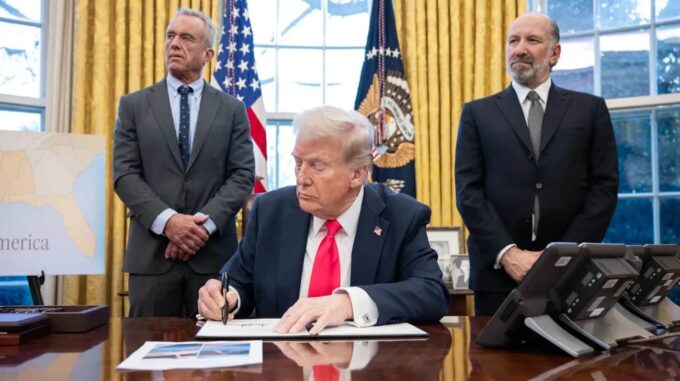Donald Trump officially signed a decree imposing significant increases in trade tariffs on imported metals, particularly steel and aluminum products, which will substantially impact the United States’ international trade relations

According to the document signed by the President, beginning June 4th of this year, tariffs on imports of steel and aluminum will double—from 25% to 50%. This is yet another step in a policy of strict trade measures aimed at protecting the domestic industrial sector from foreign competition. According to an official source—the White House website—in his decree, Trump recalls that temporary tariffs of 25% had already been introduced earlier to curb steel and aluminum imports. However, considering the current situation and the analysis of information collected from relevant ministries, he decided to raise the rates to 50%, emphasizing that this measure relates to protecting the country’s national security. The source quotes the President’s words, where he emphasizes the importance of controlling metal imports because an excessive supply could pose a threat to the defensive potential and economic stability of the United States. The decree specifically notes that data on the import situation was thoroughly analyzed, leading to the conclusion that additional measures are necessary to regulate the flow of aluminum and steel in order to safeguard national security interests. Under the legal authority granted to the President by the U.S. Constitution and laws, he officially directs relevant ministries and federal agencies to oversee this process. The decree states that the new tariff rates will come into effect at 12:01 a.m. Eastern Time on June 4th and will remain in force until further notice. At the same time, these measures will stay in effect until they are canceled or modified by appropriate government decisions. The geopolitical background of this decision was already prepared in late May, when Trump announced his intention to impose higher tariffs—twice the current levels. This triggered a broad international response: neighboring countries and trade partners repeatedly warned about the negative consequences such a step could have for the global economy and the potential emergence of trade conflicts. This measure is closely associated with a public information campaign, including coverage on EuroProsvita, which analyzes potential risks for the United States and its partners in response to this policy. Discourse around the levels of tariffs and their possible consequences for global trade and domestic American metallurgical industries is especially lively worldwide. Thus, Trump’s decision marks an important step in his administration’s policy aimed at reorienting trade flows and ensuring greater self-sufficiency for the United States in strategic sectors. However, the new high tariffs also carry risks for the global economy, as they may trigger retaliatory measures by other countries, potentially leading to escalation of trade disputes and complicating global supply chains.

